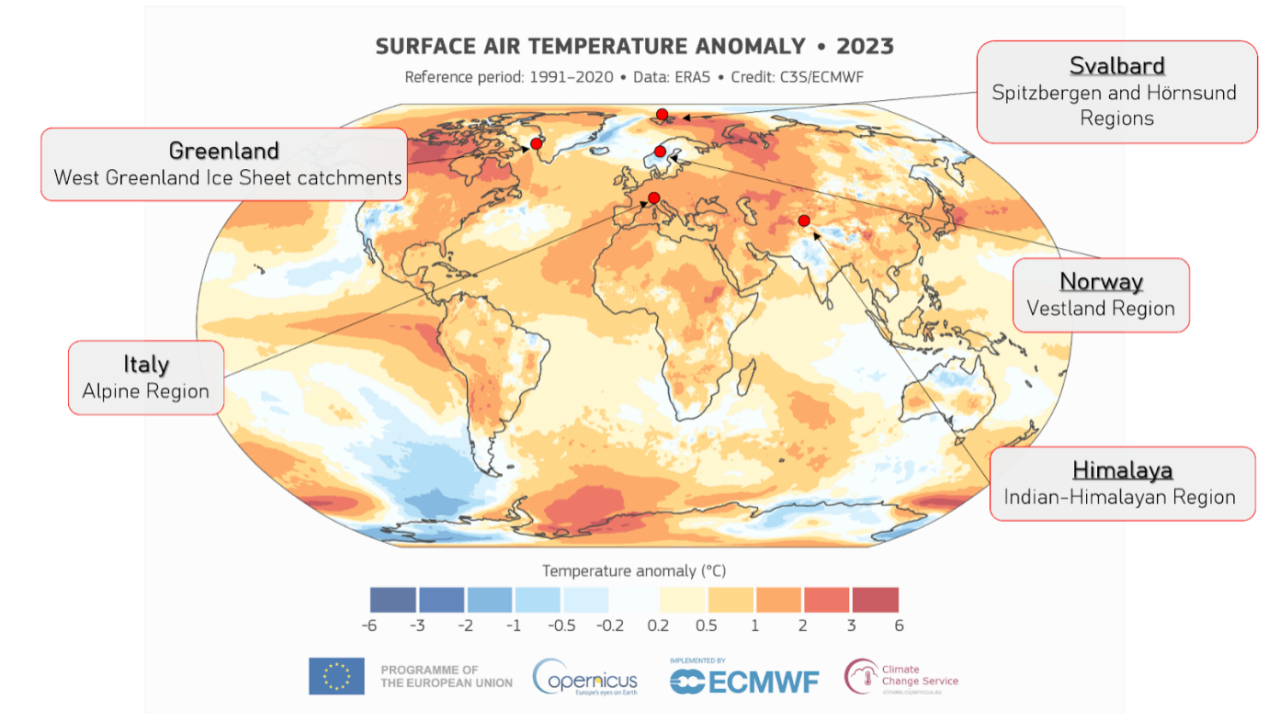
Erika Coppola, a research scientist in the ICTP’s Earth System Physics section, is among the members of LIQUIDICE, an international project funded by the European Union that aims to understand how snow, ice, and permafrost impact climate at the global scale and the future of water resources.
Launching on February 1 and running for four years, the project will study changes in the glaciers of five key regions: the Alps, Norway, the Himalayas, Svalbard, and Greenland’s ice sheet. Coppola's group will focus on the Alps. “ICTP will provide high resolution climate projections using the RegCM regional climate model, coupled with a glacier model, to assess the impact of global warming on the Alpine glacier and the water budget in the Alpine river catchments,” Coppola explains.
Through the collaboration of 18 leading scientific institutions from Europe and India, LIQUIDICE will employ cutting-edge technologies—from satellite observations to advanced climate models—to better predict how climate change will affect sea levels, hydrology, and the lives of millions. These crucial studies, which impact water management, energy, tourism, and adaptation strategies, will be coordinated by scientists from the Institute of Geophysics, Polish Academy of Sciences.
The project will develop unique datasets, precise climate models, and innovative tools for monitoring cryospheric changes. These results will not only enhance scientific understanding of Earth’s fundamental processes but—perhaps most importantly—provide policymakers and society with vital information useful for adaptation to climate change.
LIQUIDICE focuses on key glacial regions—so-called supersites—that play a crucial role in both local ecosystems and global climate processes. Italy’s Monte Rosa glacier system supports hydroelectric power and winter tourism, but shrinking snow cover threatens these sectors. In Norway, the Jostedalsbreen glacier provides up to 15% of the country’s hydropower, making it a key component of energy security. In Greenland, the Ilulissat and Kangerlussuaq catchments reveal the global consequences of ice sheet melting, affecting water resources and sea levels. Svalbard is facing permafrost degradation, destabilizing infrastructure and altering hydrological conditions. The freshwater inflow from melting glaciers significantly impacts fjord ecosystems. In the Himalayas, glacier melt and changing precipitation patterns in river basins could soon threaten drinking water access for 240 million people in the region and up to 1.65 billion living downstream. LIQUIDICE studies these critical regions, providing essential data to help predict the future of water and energy resources in the era of climate change.


















